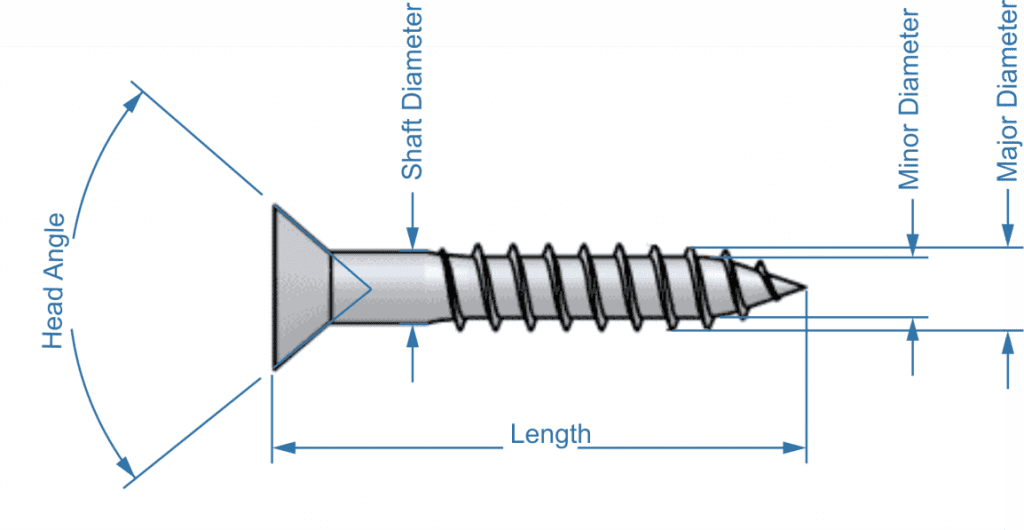Fixing a screw hole that’s too big can be a frustrating experience, but it’s one that can be easily resolved with the right approach. Whether you’re dealing with a stripped screw hole or a hole that’s simply too large for the screw you want to use, there are several effective methods to restore the hole and secure your screw. This comprehensive guide will walk you through the various techniques, providing you with the knowledge and confidence to fix any oversized screw hole.

Image: theplywood.com
Understanding the Problem: Why Screw Holes Become Too Big
Screw holes can become too big for a number of reasons. Over-tightening the screw, using the wrong size screw, or drilling the hole too large are common culprits. Once the hole is damaged, it loses its grip on the screw, potentially weakening the joint or causing the screw to fall out.
Method 1: Using Epoxy and a Dowel
If the screw hole is significantly oversized, one effective solution is to fill it with epoxy and insert a dowel.
- Clean the hole thoroughly, removing any debris or dirt.
- Mix the epoxy according to the manufacturer’s instructions.
- Fill the hole with the epoxy, leaving a small gap at the top.
- Cut a wooden dowel to the length of the screw hole.
- Insert the dowel into the epoxy-filled hole and tap it gently with a hammer or mallet to ensure it’s fully seated.
- Allow the epoxy to cure completely according to the manufacturer’s instructions.
- Once the epoxy is cured, drill a new pilot hole through the center of the dowel, slightly smaller than the diameter of the screw you want to use.
- Insert the screw into the new pilot hole.
Method 2: Using a Screw Anchor
Screw anchors are prefabricated inserts that expand inside the hole, providing a secure grip for the screw.
- Choose a screw anchor that is slightly larger than the diameter of the oversized hole.
- Insert the screw anchor into the hole, using a hammer or mallet to tap it into place until it is flush with the surface.
- Insert the screw into the screw anchor. The anchor’s design should grip the screw tightly, preventing it from loosening or pulling out.

Image: www.pinterest.com
Method 3: Using a Toothpick and Wood Glue
For smaller holes, a simple yet effective solution is to use toothpicks and wood glue.
- Gather several toothpicks and coat the ends with wood glue.
- Insert the toothpicks into the oversized hole, pressing them in firmly.
- Break off any excess toothpicks that protrude from the hole.
- Allow the wood glue to dry completely.
- Once the glue is dry, the toothpicks will reinforce the hole, adding strength and allowing the screw to hold securely.
Method 4: Using a Wood Filler
Wood filler can be used to fill in minorly oversized holes, creating a solid base for the screw.
- Choose a wood filler that is appropriate for the material you are working with (e.g., wood, drywall).
- Apply a small amount of wood filler to the oversized hole, using a putty knife or your finger to smooth it over.
- Allow the wood filler to dry according to the manufacturer’s instructions.
- Once the wood filler is dry, drill a new pilot hole through the filled area, slightly smaller than the diameter of the screw you want to use.
- Insert the screw into the new pilot hole. The wood filler will provide support around the screw, ensuring a secure hold.
How To Fix Screw Hole Too Big
Conclusion
Fixing a screw hole that’s too big doesn’t have to be a daunting task. By understanding the problem and choosing the right method for your specific situation, you can quickly and effectively restore the screw hole to its original strength, ensuring a secure and lasting hold. Whether you opt for epoxy and a dowel, screw anchors, toothpicks and wood glue, or wood filler, these proven techniques will empower you to handle any screw hole repair with confidence and precision.